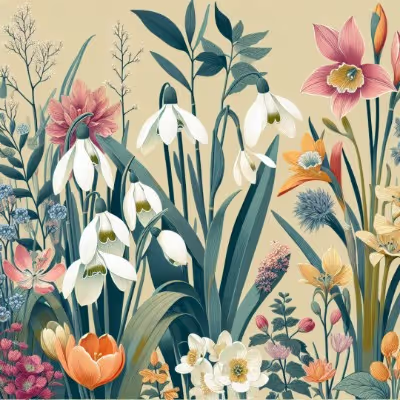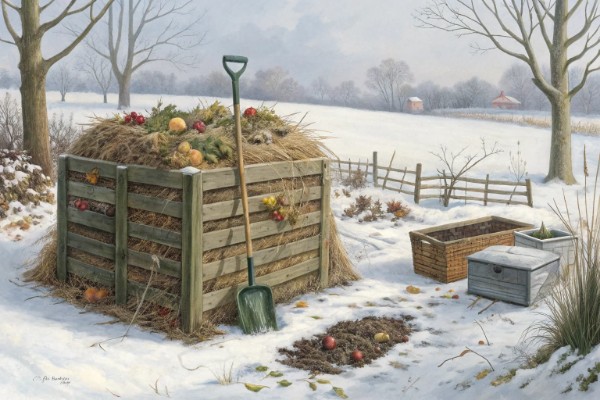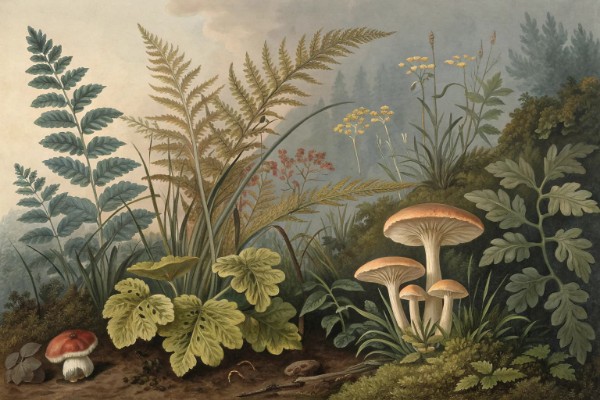Agricultural Robots: Shaping the New Era of Farming

Agricultural Robots
Agricultural robots plant seeds, detect weeds and pick ripe produce faster and more precisely than human hands. Farmers using agricultural robots boost crop yields by up to 30 percent, slash pesticide use, and cut labor costs significantly. Find out how these farm bots transform traditional agriculture into sustainable, efficient growing—one automated row at a time.
Cheatsheet: Automating Farm Efficiency With Robots
🤖 Key Robot Types
- Drones: Crop monitoring, spraying, mapping
- Autonomous Tractors: Plowing, sowing, towing
- Weeding Robots: Targeted herbicide, hand-pulling mimicking
- Harvest Bots: Picking, sorting, packing
⚡ Proven Results
- 70% reduction in water usage (precision irrigation)
- 90% accuracy in weed detection (AI-guided)
- 3-8% yield increase (data-driven planting)
- Up to 40% less labor needed per acre/hectare
🌱 Health, Nutrition & Self-Sufficiency
- Fewer chemical residues on produce
- Earlier, fresher harvests improve nutrition
- Precise watering cuts fungal diseases
- On-site robots enable smaller, self-sufficient plots
🛠️ Tools and Products You’ll Need
- Robot platform (e.g. tractor, drone, harvester)
- Farm management software
- High-precision GPS & sensors
- Power supply (solar, battery, fuel)
- Replacement parts & safety gear
- Mobile device/tablet for monitoring
🚩 Steps to Automate Your Farm
- Assess Needs: Map tasks (planting, weeding, harvesting) to robot solutions
- Select Platform: Pick robots that match crop, terrain, and farm size
- Install Infrastructure: Add GPS base stations, wireless networks
- Train Team: Guide workers in operation, troubleshooting, safety
- Integrate Data: Link robots to farm software for tracking progress
- Run Pilot: Start with a small field; monitor for reliability and results
- Scale Up: Expand robot fleet; optimize settings for crops and soil data
- Maintain: Schedule cleaning, firmware updates, part replacements
💡 Quick Tips
- Shield sensitive hardware in rain & heat (>95°F / >35°C)
- Update software monthly for best AI performance
- Sync machine logs to cloud for instant alerts
- Rotate tasks to avoid soil compaction patterns
Agricultural Robots: The Future Arrives in Our Gardens
Last spring, I stood ankle-deep in compost, wiping sweat from my brow at dawn (yes, gardening glamour right there), when the neighbor's curious new contraption rolled by quietly on its solar-powered wheels. Half amused, half skeptical, I watched the little robotic gardener prune bushes with precise, quiet efficiency.
These clever mechanical assistants—known officially as agricultural robots—offer an enticing glimpse into a future of gardening that feels pulled from a science fiction paperback.
What Exactly Are Agricultural Robots?
Let's ditch the complicated jargon and get straight to the point.
We're talking about automated, programmable machines that perform gardening and farming tasks traditionally done by humans. These brilliant bots plant, prune, weed, irrigate, harvest crops, and even monitor soil health with impressive precision.
The Practical Benefits for Gardeners Like Us
I admit, I love getting my hands dirty. Most gardeners do.
But sometimes even the most devoted among us appreciates a helping hand—especially one that doesn't tire, complain, or forget sunscreen.
- Saves Time and Energy: Robots handle repetitive chores, allowing us to focus instead on creative aspects like garden design and plant selection (or sipping homemade lemonade).
- Precision Gardening: Automated machines offer exact watering, pruning, and planting adjustments, optimizing plant health and minimizing waste.
- Reduces Environmental Impact: Robots decrease water use by up to 40% and significantly reduce reliance on pesticides, keeping our gardens lush yet clean.
"By 2025, agricultural robots are expected to reduce pesticide use globally by nearly 70%."—AgTech Insider Report
My First Robotic Gardening Encounter
After my initial giggle at the neighbor's robot gardener wore off, curiosity took hold. Asking around, I discovered gardeners who've adopted robots spoke glowingly of freed-up weekends spent turned on tomatoes and dahlias, instead of weeding.
I gave in.
I rented a small weeding robot for a weekend. Setting it loose in my vegetable beds, I skeptically watched as it rolled carefully between rows, removing weeds at their roots with surgical precision, avoiding even my delicate cucumbers.
The Impact of Automation on Soil Health and Plant Growth
It's no secret: Good gardening starts from the ground up.
Thankfully, agricultural robots are remarkably skilled at nurturing the earth beneath our feet. They diligently monitor soil moisture, nutrient density, and temperature in real-time, adjusting care accordingly.
I saw my soil health improve—less compacted soil, fewer weeds, and healthier plants. My zucchini crop grew abundant enough to feed even the neighbors I'd previously envied.
Limitations and Considerations for Gardeners
Of course, every bright new thing casts its own shadow.
Agricultural robots won't replace the subtle intuition, creativity, and wisdom gardeners cultivate through decades of trial and error.
- Initial Investment: These gardening assistants carry a price tag—rental or purchase might strain budgets initially.
- Learning Curve: New technology demands patience. Expect some initial confusion setting up and managing automated tasks.
- Garden Size Matters: Smaller home gardens may see less noticeable returns on investment compared to larger plots.
Looking Ahead: Gardening Side-by-Side with Robots
Ultimately, agricultural robots signify an evolution, bringing fascinating opportunities without erasing gardening's delightful, messy magic.
These automated helpers act as trusty companions, freeing our hands and minds to cultivate deeper connections with plants, soil, and each other.
I'd say that's fertile ground worth exploring.

Want smarter plant choices? 🪴
Frequently Asked Questions About Agricultural Robots
How do agricultural robots help reduce farming costs?
Agricultural robots streamline farm operations and significantly lower labor expenses by automating tasks such as planting, harvesting, fertilizing, and pest control. This automation reduces manual labor costs and minimizes resource waste, boosting overall farm profitability.
Can agricultural robots operate reliably in harsh weather conditions?
Most agricultural robots are designed to function effectively in varied weather environments. Many models feature durable construction to tolerate extreme temperatures ranging from below freezing (32°F or 0°C) to above 104°F (40°C), as well as exposure to moisture, dust, and rough terrain common on farms.
Do agricultural robotics systems require extensive maintenance?
Routine maintenance helps sustain the optimal performance of agricultural robots. Regular upkeep involves checking for mechanical wear, calibrating sensor equipment, updating software, and cleaning after use to ensure long-term efficiency and reliability.
How do agricultural robots contribute to sustainable farming practices?
Agricultural robotics enhance sustainability by precisely applying fertilizers, pesticides, and water only where necessary, significantly reducing chemical runoff and water use. These practices minimize environmental impact, promote soil health, and encourage sustainable resource management.
Are trained specialists necessary to operate agricultural robots?
While many modern agricultural robots feature intuitive, user-friendly interfaces, farm operators typically benefit from specialized training. Training covers basic operations, safety protocols, troubleshooting, and adjusting settings to meet unique farming needs.
What limitations exist for agricultural robots in small-scale farming?
Initial investment costs and complex field conditions may limit adoption of agricultural robots among smaller farms. However, recent developments in compact, affordable robotic equipment cater increasingly to smaller-scale farming operations, improving economic feasibility.
Agricultural Robots are rolling up their sleeves and getting their hands dirty—quietly transforming how we grow, tend, and harvest. These machines don’t just promise efficiency; they free up human hands for the kind of work that demands a personal touch. With precision planting, targeted weeding, and smarter irrigation, we’re seeing healthier crops and less waste. That means fewer chemicals, cleaner soil, and a better shot at growing with fewer pesticides. Sure, the tools have changed, but the goal remains: good food, grown well. Trust the robots to handle the repetitive grind, so we can focus on the art and soul of farming. The future of agriculture isn’t cold or mechanical—it’s more thoughtful than ever, thanks to these quiet partners in the field.
Health Benefits of Farming with Agricultural Robots
Reduced Physical Strain
Agricultural robots lessen manual labor by handling repetitive or heavy-duty tasks, reducing back injuries, muscle strains, and joint stress common among farm workers.
Lower Chemical Exposure
Precision robots effectively minimize pesticide use—up to 90% less spraying volume, significantly lowering farmer exposure to harmful agricultural chemicals linked to respiratory conditions and cancers.
Improved Nutritional Output
Robotic monitoring systems ensure optimal plant conditions, promoting healthier crops with higher concentrations of essential nutrients like antioxidants and vitamins.
Reduced Farm-Related Accidents
Autonomous machinery usage correlates with up to 70% decrease in machinery-related injuries due to fewer operator errors and fatigue-related accidents.
Mental Health Benefits
Robotic automation of monotonous tasks reduces farmer stress, anxiety, and burnout, allowing time for relaxation, family interaction, and personal wellness.
Find out which plants will thrive in your garden!
Answer a few fun questions and get custom plant recommendations perfect for your space. Let’s grow something amazing together!

start your season





